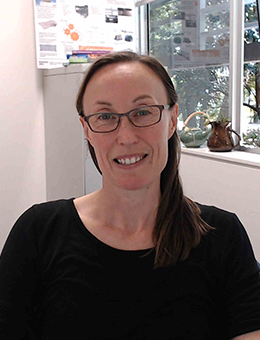Supporting meaningful completion of online assessments

Emma Heffernan | Engineering and Information Sciences (EIS)
By rethinking traditional examinations students were able to gain new skills and experiences. This process was scaffolded through a range of support materials.
Hi, I'm Emma Heffernan. I wanted to provide a quick summary video for this LTC showcase.
In AENG200 in the autumn session of 2020, I was asking students to undertake assessment tasks which were outside of their usual comfort zone. These were engineering students who were being asked to produce more creative outputs.
So as a requirement I needed to make sure that I was scaffolding their skills in these new areas of skills that they were developing throughout the subject. And this was through a combination of asynchronous and synchronous tutorial activities. I also wanted to give students an opportunity to share their work, and so I did this through things like including an online gallery for them to virtually present their work to each other and also through integrating peer-review within the assessment tasks.
Hopefully you find some tips that are useful to you and if you've got any questions then by all means drop me an email, thanks.
In the face-to-face environment, I had planned for Assessment Task 1 (AT1) to be poster presentations of students' choice of buildings. With the move to online, posters couldn't be hung around the physical classroom.
The final assessment for this subject was a 'Multimedia Presentation' worth 40%. Given the format of the last assessment was outside of their 'usual work', the last three tasks all scaffolded students towards the completion of this final task. The final three assessments formed a block: AT4 (a draft video) AT5 (a peer-review) AT6 (a final video).
The final assessment was not the celebration originally planned (i.e., a movie-themed event, with popcorn). Similarly, with the weeks of session being pushed out it meant that the original due date/event now landed on the public holiday.
How?
Students were given an 'Assessment Brief' which incorporated all of the criteria for all of the assessment items. The goal of the brief was to ensure all the important assessment material and information could be located in one place. Key information relating to assessment completion could be found in this document.
For AT1, the poster submission was changed to suit online by using an online gallery tool to allow students to showcase their work virtually.
In order to complete the peer review online, the online survey software Qualtrics was used. This tool allowed comments to be easily shared online with the student author without the administrative overheads of trying to disperse the reports manually. Students knew upfront that it wasn't an anonymous activity as one of the criteria was around communicating in a collegial manner.
Given the final submission was a video, we had tutorials on storyboarding, a tutorial on video editing, and a couple on architectural sketching. These tutorials were used to teach students a range of technical skills. In this way, knowledge and skills were supported and scaffolded so that students would be able to deliver the assessable items.
For the final video, students were given video length specifications (between 3-4 min) and told to upload to YouTube and a link provided. Students were also told that they needed accompanying narration to introduce and analyse the building of their choice. Students also needed to include their own drawings and critically analyse the building.
Reflection
Having a final assessment as a celebration allows students to celebrate the subject and their work. This might have to look a little different but can be done online too.
Providing students with all the information they need to know in the one place for their assessment means students don't have to go elsewhere and try and track down the information.
Placing assessment submission points in the same section allows the student to know where to submit their assessment every time.
Supplying students with support resources supports the students in producing quality assessments. Students can also help you curate helpful resources as they use and find information or tools that they find helpful.
Support resources
- Rethinking the 'Traditional' Exam | Preparing to Teach Online
- Take-Home Assessments (problem-based) | Preparing to Teach Online
- Instructions for Assessment | Preparing to Teach Online



